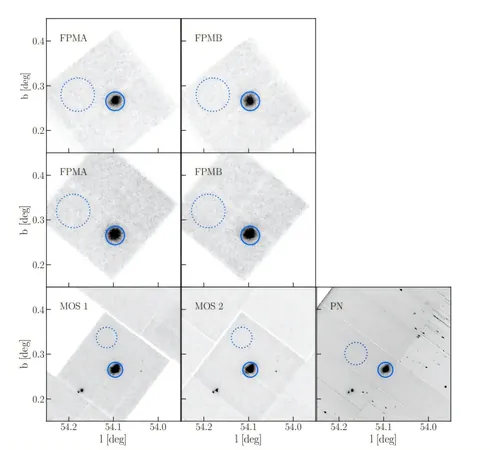
Unraveling the Mysteries of Pulsar PSR J1930+1852 and Its Spectacular Nebula
2025-07-08
Author: Sarah
Astronomers Dive Deep into the Heart of PSR J1930+1852
In an exciting new study, astronomers from New York University (NYU) Abu Dhabi have turned their gaze to the pulsar PSR J1930+1852 and its stunning pulsar wind nebula (PWN), utilizing the powerful NuSTAR and XMM-Newton satellites. Their findings, detailed in The Astrophysical Journal, unveil a wealth of information about this intriguing cosmic duo.
What Are Pulsar Wind Nebulae?
Pulsar wind nebulae are fascinating structures generated by the winds of energetic pulsars, which consist of charged particles. When this high-speed wind collides with its surroundings—especially the remnants of a supernova—it forms a nebula that can stretch out with beautiful tails and dramatic jets.
The Unique Properties of PSR J1930+1852's Nebula: G54.1+0.3
The specific nebula being studied, G54.1+0.3, is powered by the pulsar PSR J1930+1852, known for its considerable spin-down power, youth, and rapid spin period of about 137 milliseconds. Interestingly, past observations have identified that this nebula lacks an obvious shell that typically indicates a supernova remnant.




 Brasil (PT)
Brasil (PT)
 Canada (EN)
Canada (EN)
 Chile (ES)
Chile (ES)
 Česko (CS)
Česko (CS)
 대한민국 (KO)
대한민국 (KO)
 España (ES)
España (ES)
 France (FR)
France (FR)
 Hong Kong (EN)
Hong Kong (EN)
 Italia (IT)
Italia (IT)
 日本 (JA)
日本 (JA)
 Magyarország (HU)
Magyarország (HU)
 Norge (NO)
Norge (NO)
 Polska (PL)
Polska (PL)
 Schweiz (DE)
Schweiz (DE)
 Singapore (EN)
Singapore (EN)
 Sverige (SV)
Sverige (SV)
 Suomi (FI)
Suomi (FI)
 Türkiye (TR)
Türkiye (TR)
 الإمارات العربية المتحدة (AR)
الإمارات العربية المتحدة (AR)